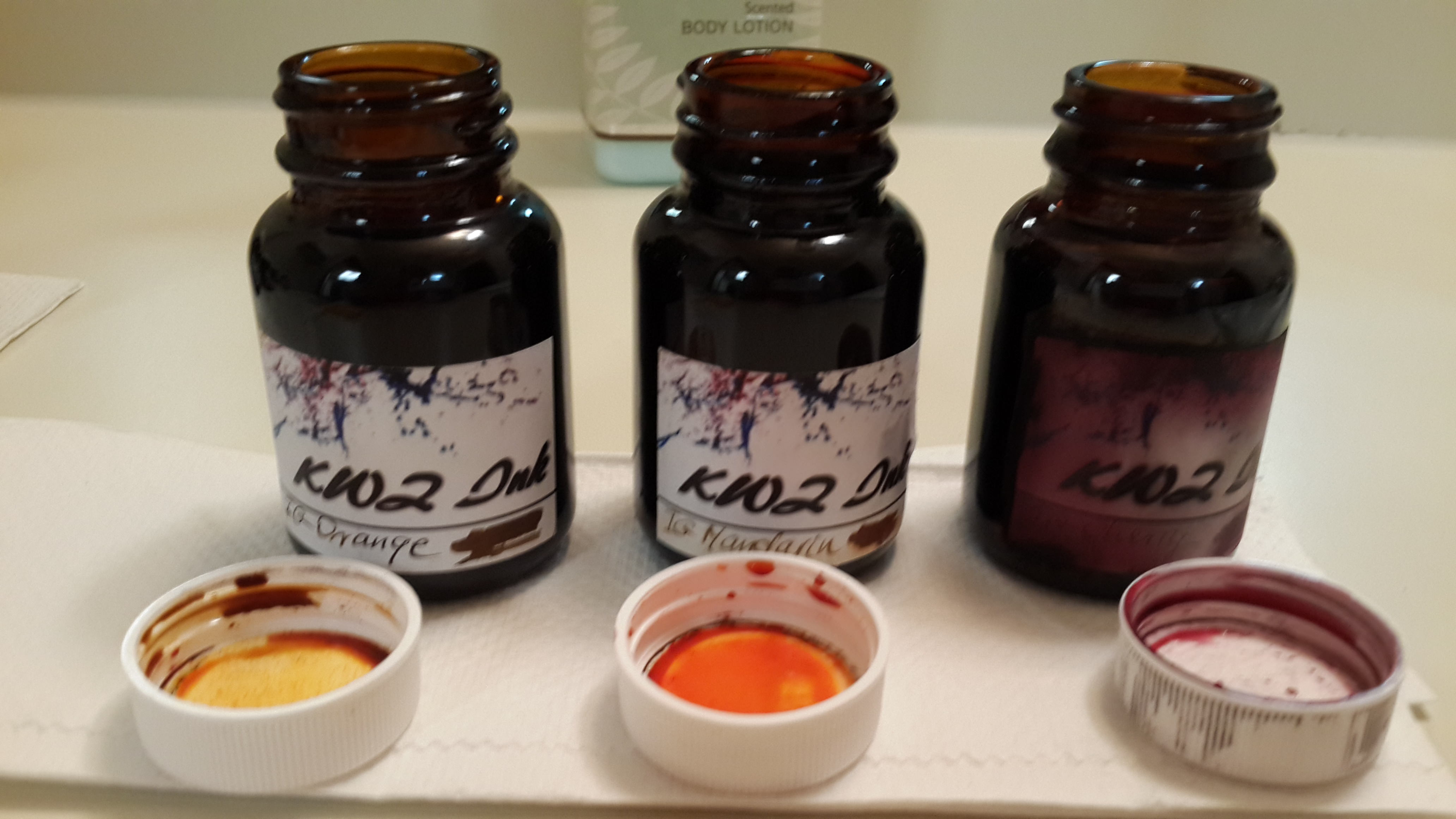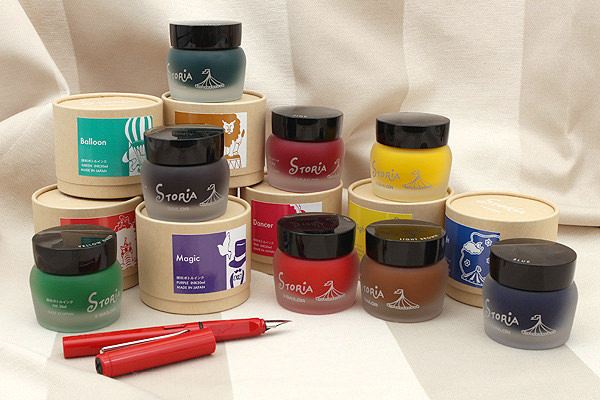Almost all fountain pen nuts know about the “good” papers like Rhodia, Clairfontaine, and Apica. However, sometimes, you are just stuck using cheap, bad quality paper. It could be that your office provides those thin legal pads, you scribble prescriptions on carbon paper, you need to fill out long tax forms, etc…
So, what ink should you use that doesn’t feather, bleed, or show through on those papers?
You have quite a few options out there when it comes to well-behaved inks on cheap paper. There are Iron-Gall inks, nano-pigmented inks, and feather-proof inks to consider.
Iron Gall Inks
Iron gall inks are unique in the fact that they were invented long long ago, as far back as the 4th century according to some records. They were the de facto standard for writing in early Europe starting from the 5th century, all the way to the 19th century, and still remained popular later on, due to their outstanding qualities.
Iron Gall or IG ink is made from a solution of iron salts and tannic acid, mostly obtained through vegetable sources, such as tea and oak galls. IG inks are generally quite acid, and a bit of caution should be exercised when using them.
Good IG ink brands I can recommend are KWZI (a Polish brand), Rohrer and Klinger (Salix and Scabiosa), and Diamine Registrar’s ink.

Pros
- Very resistant to feathering and bleed through on cheap papers
- IG inks tend to resist feathering on even the cheapest papers, due to their unique chemistry.
- Comes in a wide range of colors
- Modern IG inks are available in almost every color imaginable.
- High amounts of permanence once on the paper
- The chemistry of IG inks allow them to penetrate deep into the surface of the paper, making them extremely permanent.
- High amounts of shading
- IG inks oxidize to black on the very wet areas, so there is normally a very high amount of shading.
Cons
- May do harm to some pens
- IG inks are acidic (lower pH) and may harm pens if left in them for extended periods of time. There is a minor risk of corrosion.
- Requires a regular cleaning schedule
- IG inks may form a precipitate if left in the pen for some period of time, so your pen will need to be cleaned regularly to avoid clogging.
- Darkens over time
- Air will oxidize IG inks and turn them a lot darker very quickly. The ink will most likely lay down a very bright shade, but will soon turn into black in some areas.
Nano-pigment Inks
Nano-pigment inks are a very recent development. They have the normal dye-based component of the ink, and also a microscopic pigment-based component as well. Think of it as very fine powder inside the ink. These pigments are small enough that they do not affect the flow of the pen in any major way.
Few companies offer nano-pigment inks as of now, since it is a very new technology. Those I know that have them are Sailor (new Storia line and Kiwa-Guro), Hero (Carbon line). Some other brands may eventually released nano-pigment inks, but for now, those are the only ones.

Pros
- Brand new type of ink
- Again, this is a new type of ink that is recently developed.
- Very permanent on the page
- Nano-pigment inks are extremely permanent as they incorporate a pigment which penetrates deep into the paper fibers and remains latched in.
- Somewhat resistant to feathering and bleed through
- The pigment component gives the ink some resistance to feathering and bleed that other dye-based inks don’t have.
- Deep, bold colors
- These inks tend to have very deep and bold colors because of the nature of the pigmentation. This is especially profound if you want the darkest black in the world.
Cons
- Requires regular cleaning and maintenance schedule
- The pigments of the ink, no matter how small, could still result in a little bit of clogging in your pen, so it is recommended to clean the pen at regular intervals.
- Reactive to other types of ink
- Nano-pigment ink is completely unlike other fountain pen inks, and has a tendency to react negatively with other inks if accidentally mixed. Thus, when flushing the pen after using Nano-pigment inks, be sure to be very thorough.
- Very expensive right now
- The Sailor nano-pigment inks are quite expensive right now. A single bottle of the Storia ink goes for about $26 from most retailers.
- Not readily available
- These types of ink is hard to find from most retailers, but expect their presence to increase as they get more popular.
Noodler’s X-Feather
Noodler’s Ink Company makes a specialized ink designed to not feather on every surface imaginable. It will work on anything from Rhodia to a sheet of single-ply toilet paper, though I do not recommend you take your notes on the toilet. This ink is neither an Iron Gall, nor a nano-pigment, so I feel it deserves its own category.
Pros
- Won’t feather on anything *This ink seriously does not feather on anything at all. You can throw it at the cheapest, most absorbent thing you can think of, and it will not feather. Great if you are running on the worst paper known to mankind.
- Can be picked up at most retailers
- This ink can most likely be picked up at your favorite pen retailer. If they carry Noodler’s ink, chances are, they will have this one.
- Bulletproof
- Noodler’s labels this ink as “bulletproof” which is their way of saying it is extremely permanent and resistant to most things you can throw at it.
- Deep black color
- If you are looking for a deep, solid black color, with not much shading, this is a great ink to look into.
Cons
- Longer dry times
- This ink tends to have longer dry times, due to its anti-feathering property. It is much more noticeable on high-end papers like Rhodia, so I do not recommend this if you have a tendency to smear inks.
(KWZI picture is courtesy of Amberlea Davis of FPN. The Sailor Storia picture is courtesy of JetPens. All images are property of their respective owners.)
